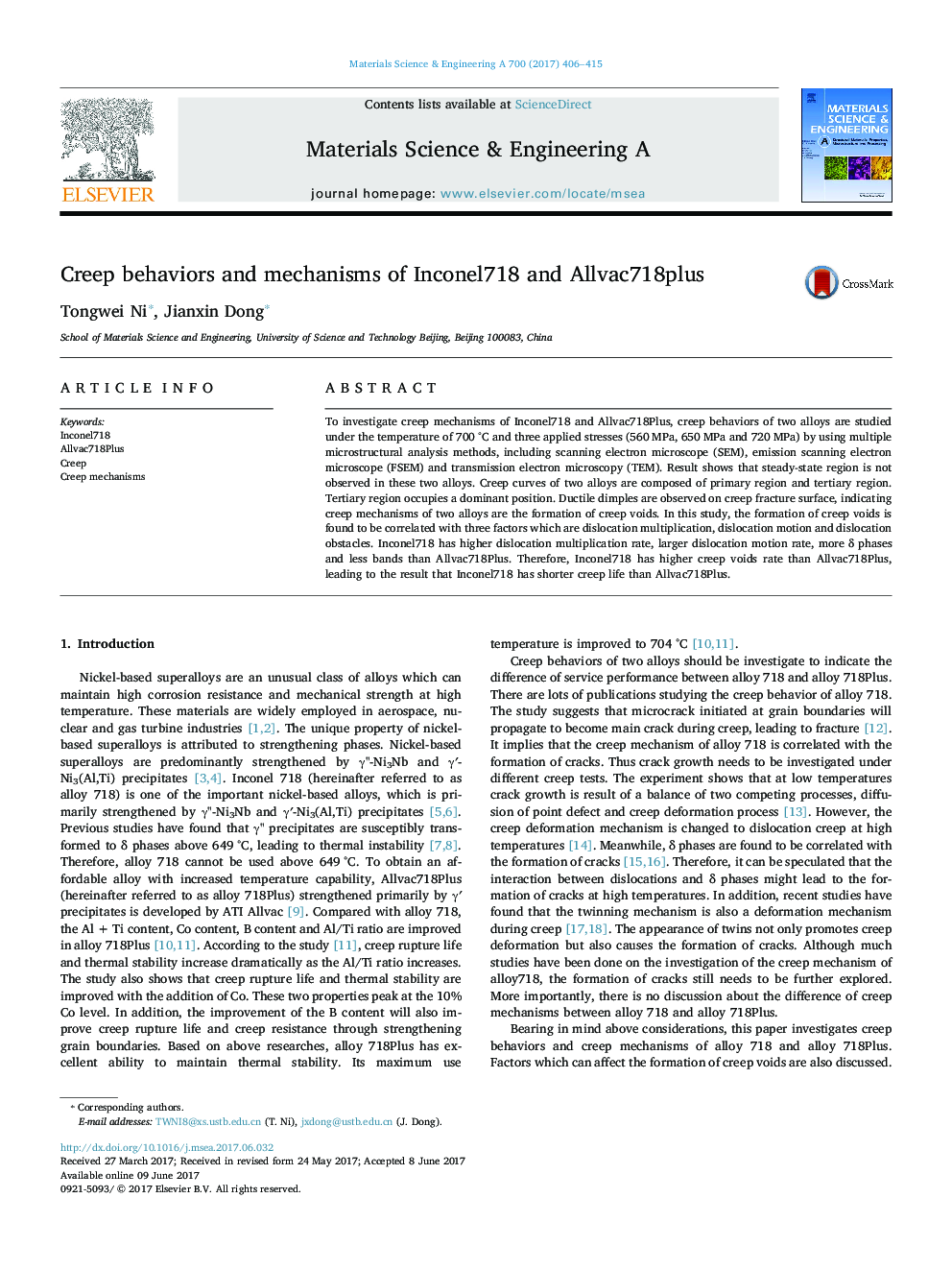| Article ID | Journal | Published Year | Pages | File Type |
|---|---|---|---|---|
| 5455461 | Materials Science and Engineering: A | 2017 | 10 Pages |
Abstract
To investigate creep mechanisms of Inconel718 and Allvac718Plus, creep behaviors of two alloys are studied under the temperature of 700 °C and three applied stresses (560 MPa, 650 MPa and 720 MPa) by using multiple microstructural analysis methods, including scanning electron microscope (SEM), emission scanning electron microscope (FSEM) and transmission electron microscopy (TEM). Result shows that steady-state region is not observed in these two alloys. Creep curves of two alloys are composed of primary region and tertiary region. Tertiary region occupies a dominant position. Ductile dimples are observed on creep fracture surface, indicating creep mechanisms of two alloys are the formation of creep voids. In this study, the formation of creep voids is found to be correlated with three factors which are dislocation multiplication, dislocation motion and dislocation obstacles. Inconel718 has higher dislocation multiplication rate, larger dislocation motion rate, more δ phases and less bands than Allvac718Plus. Therefore, Inconel718 has higher creep voids rate than Allvac718Plus, leading to the result that Inconel718 has shorter creep life than Allvac718Plus.
Keywords
Related Topics
Physical Sciences and Engineering
Materials Science
Materials Science (General)
Authors
Tongwei Ni, Jianxin Dong,
